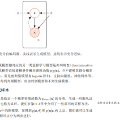A natural approach to generative modeling of videos is to represent them as a composition of moving objects. Recent works model a set of 2D sprites over a slowly-varying background, but without considering the underlying 3D scene that gives rise to them. We instead propose to model a video as the view seen while moving through a scene with multiple 3D objects and a 3D background. Our model is trained from monocular videos without any supervision, yet learns to generate coherent 3D scenes containing several moving objects. We conduct detailed experiments on two datasets, going beyond the visual complexity supported by state-of-the-art generative approaches. We evaluate our method on depth-prediction and 3D object detection -- tasks which cannot be addressed by those earlier works -- and show it out-performs them even on 2D instance segmentation and tracking.
翻译:对视频进行基因建模的自然做法是将它们作为移动对象的构成来代表。 最近的工作在缓慢变化的背景上模拟一套 2D 图案, 但不考虑导致这些图案的基底三维场景。 我们建议用一个视频模型来模拟一个景象, 在带多个三维天体和三维背景的场景中移动。 我们的模型在没有任何监督的情况下用单视视频来训练, 却学会生成包含多个移动天体的三维 场景。 我们对两个数据集进行详细的实验, 超越了最先进的基因化方法所支持的视觉复杂性。 我们评估了我们的深度定位和三维天体探测方法, 这些早期的作品无法解决这些任务, 并显示它甚至在二维实例分割和跟踪上都符合它们。




